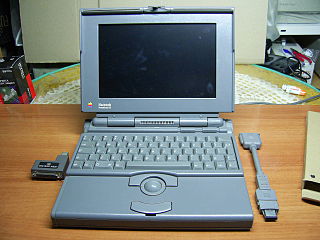A plaintiff is the party who initiates a lawsuit before a court. By doing so, the plaintiff seeks a legal remedy. If this search is successful, the court will issue judgment in favor of the plaintiff and make the appropriate court order. "Plaintiff" is the term used in civil cases in most English-speaking jurisdictions, the notable exceptions being England and Wales, where a plaintiff has, since the introduction of the Civil Procedure Rules in 1999, been known as a "claimant" and Scotland, where the party has always been known as the "pursuer". In criminal cases, the prosecutor brings the case against the defendant, but the key complaining party is often called the "complainant".

In geometry, two figures or objects are congruent if they have the same shape and size, or if one has the same shape and size as the mirror image of the other.

Twins are two offspring produced by the same pregnancy. Twins can be either monozygotic ('identical'), meaning that they develop from one zygote, which splits and forms two embryos, or dizygotic, meaning that each twin develops from a separate egg and each egg is fertilized by its own sperm cell. Since identical twins develop from one zygote, they will share the same sex, while fraternal twins may or may not. In rare cases twins can have the same mother and different fathers.

A multiple birth is the culmination of one multiple pregnancy, wherein the mother gives birth to two or more babies. A term most applicable to vertebrate species, multiple births occur in most kinds of mammals, with varying frequencies. Such births are often named according to the number of offspring, as in twins and triplets. In non-humans, the whole group may also be referred to as a litter, and multiple births may be more common than single births. Multiple births in humans are the exception and can be exceptionally rare in the largest mammals.
In philosophy, identity, from Latin: identitas ("sameness"), is the relation each thing bears only to itself. The notion of identity gives rise to many philosophical problems, including the identity of indiscernibles, and questions about change and personal identity over time. It is important to distinguish between qualitative identity and numerical identity. For example, consider two children with identical bicycles engaged in a race while their mother is watching. The two children have the same bicycle in one sense and the same mother in another sense. This article is mainly concerned with numerical identity, which is the stricter notion.

In biology, a colony is composed of two or more conspecific individuals living in close association with, or connected to, one another. This association is usually for mutual benefit such as stronger defense or the ability to attack bigger prey. It is a cluster of identical cells (clones) on the surface of a solid medium, usually derived from a single parent cell, as in bacterial colony. In contrast, solitary organisms are ones in which all individuals live independently and have all of the functions needed to survive and reproduce.

A holotype is a single physical example of an organism, known to have been used when the species was formally described. It is either the single such physical example or one of several examples, but explicitly designated as the holotype. Under the International Code of Zoological Nomenclature (ICZN), a holotype is one of several kinds of name-bearing types. In the International Code of Nomenclature for algae, fungi, and plants (ICN) and ICZN, the definitions of types are similar in intent but not identical in terminology or underlying concept.
Cooperativity is a phenomenon displayed by systems involving identical or near-identical elements, which act dependently of each other, relative to a hypothetical standard non-interacting system in which the individual elements are acting independently. One manifestation of this is enzymes or receptors that have multiple binding sites where the affinity of the binding sites for a ligand is apparently increased, positive cooperativity, or decreased, negative cooperativity, upon the binding of a ligand to a binding site. For example, when an oxygen atom binds to one of hemoglobin's four binding sites, the affinity to oxygen of the three remaining available binding sites increases; i.e. oxygen is more likely to bind to a hemoglobin bound to one oxygen than to an unbound hemoglobin. This is referred to as cooperative binding.
The following is a list of the types of local and supralocal territorial units in Quebec, including those used solely for statistical purposes, as defined by the Ministry of Municipal Affairs, Regions and Land Occupancy and compiled by the Institut de la statistique du Québec.

In organic chemistry, spiro compounds are compounds that have at least two molecular rings with only one common atom. The simplest spiro compounds are bicyclic, or have a bicyclic portion as part of the larger ring system, in either case with the two rings connected through the defining single common atom. The one common atom connecting the participating rings distinguishes spiro compounds from other bicyclics: from isolated ring compounds like biphenyl that have no connecting atoms, from fused ring compounds like decalin having two rings linked by two adjacent atoms, and from bridged ring compounds like norbornane with two rings linked by two non-adjacent atoms.

A sister ship is a ship of the same class or of virtually identical design to another ship. Such vessels share a nearly identical hull and superstructure layout, similar size, and roughly comparable features and equipment. They often share a common naming theme, either being named after the same type of thing or person or with some kind of alliteration. Typically the ship class is named for the first ship of that class. Often, sisters become more differentiated during their service as their equipment are separately altered.
ʾIʿrāb is an Arabic term for the system of nominal, adjectival, or verbal suffixes of Classical Arabic to mark grammatical case. These suffixes are written in fully vocalized Arabic texts, notably the Qur’ān or texts written for children or Arabic learners, and they are articulated when a text is formally read aloud, but they do not survive in any spoken dialect of Arabic. Even in Literary Arabic, these suffixes are often not pronounced in pausa ; i.e. when the word occurs at the end of the sentence, in accordance with certain rules of Arabic pronunciation. Depending on the knowledge of ʾiʿrāb, some Arabic speakers may omit case endings when reading out in Modern Standard Arabic, thus making it similar to spoken dialects. Many Arabic textbooks for foreigners teach Arabic without a heavy focus on ʾiʿrāb, either omitting the endings altogether or only giving a small introduction. Arabic without case endings may require a different and fixed word order, similar to spoken Arabic dialects.
This timeline of Macintosh models lists all major types of Macintosh computers produced by Apple Inc. in order of introduction date. Macintosh Performa models were often physically identical to other models, in which case they are omitted in favor of the identical twin. Also not listed are model numbers that identify software bundles. For example, the Performa 6115CD and 6116CD differed only in software and were identical to the Power Macintosh 6100, so only the 6100 is listed below. The Apple Network Server and Apple Lisa are included, as they filled high-end niches of the Macintosh line despite not directly running Mac OS.

The PowerBook Duo 210 is a portable notebook personal computer, manufactured by Apple Computer Inc., and introduced in October 1992. Priced at US$2250, the PowerBook Duo 210 was the low-end model of the two simultaneously released PowerBook Duos.. The specifications of the PowerBook Duo 210 are almost identical to the PowerBook 160, except that the PowerBook Duo 210 has a smaller display. Its case design is identical to the PowerBook Duo 230, but it shipped with 25 MHz 68030, instead of the faster 33 MHz 68030 on the Duo 230. The PowerBook Duo 210 had a 80MB SCSI Hard Disk Drive. It was discontinued on October 21, 1993.

The PowerBook 160 is a portable computer that was released by Apple Computer along with the PowerBook 180 on October 19, 1992 and the PowerBook 165 variants were released the following year. At the time, it constituted the mid-range model replacing the previous PowerBook 140 in processing power. The PowerBook 160 was sold until August 16, 1993.
This timeline of Apple Inc. products is a list of all stand-alone Apple II, Macintosh, and other computers, as well as computer peripherals, expansion cards, ancillary products, and consumer electronics sold by Apple Inc. This list is ordered by the release date of the products. Macintosh Performa models were often physically identical to other models, in which case they are omitted in favor of the identical twin.
Sears, Roebuck & Co. v. Stiffel Co., 376 U.S. 225 (1964), was a United States Supreme Court case which limited state law on unfair competition when it prevents the copying of an item that is not covered by a patent.
Inwood Laboratories Inc. v. Ives Laboratories, Inc., 456 U.S. 844 (1982), is a United States Supreme Court case, in which the Court confirmed the application of and set out a test for contributory trademark liability under § 32 of the Lanham Act.
In statistics, the Cochran–Mantel–Haenszel test (CMH) is a test used in the analysis of stratified or matched categorical data. It allows an investigator to test the association between a binary predictor or treatment and a binary outcome such as case or control status while taking into account the stratification. Unlike the McNemar test which can only handle pairs, the CMH test handles arbitrary strata size. It is named after William G. Cochran, Nathan Mantel and William Haenszel. Extensions of this test to a categorical response and/or to several groups are commonly called Cochran–Mantel–Haenszel statistics. It is often used in observational studies where random assignment of subjects to different treatments cannot be controlled, but confounding covariates can be measured.
This article concerns the morphology of the Albanian language, including the declension of nouns and adjectives, and the conjugation of verbs. It refers to the Tosk-based Albanian standard regulated by the Academy of Sciences of Albania.








